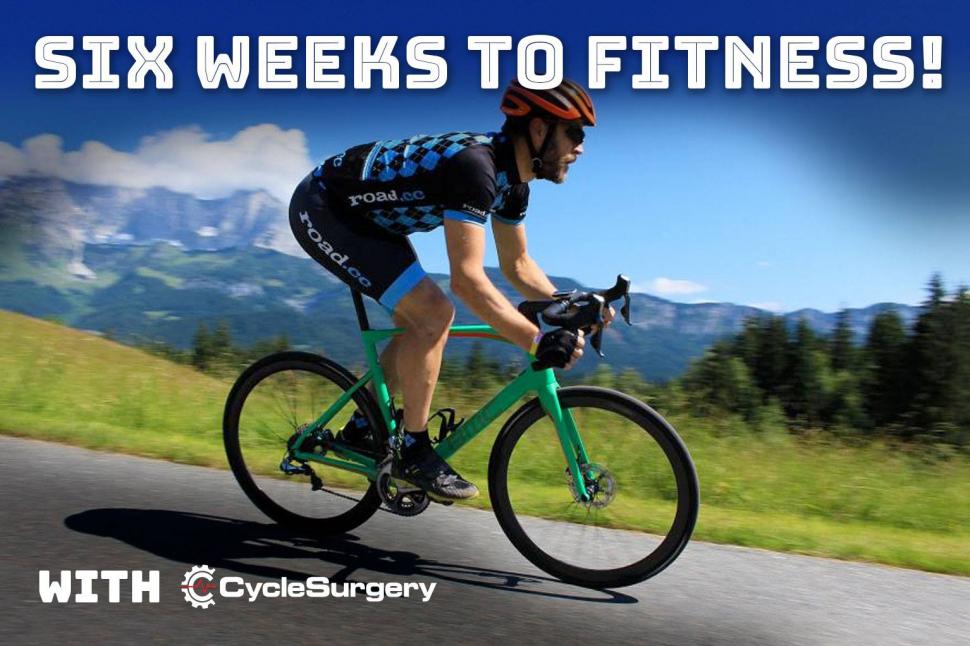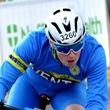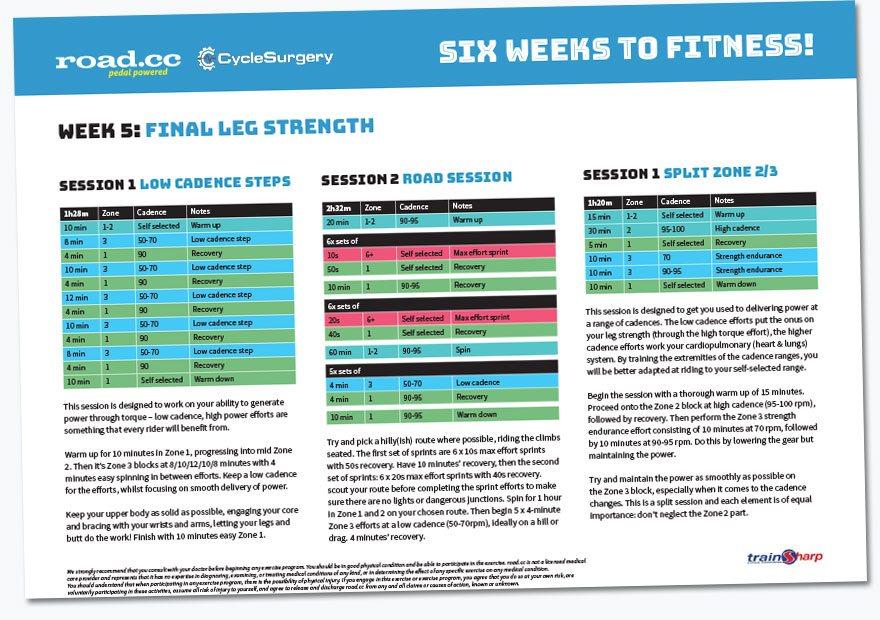- News
- Reviews
- Bikes
- Components
- Bar tape & grips
- Bottom brackets
- Brake & gear cables
- Brake & STI levers
- Brake pads & spares
- Brakes
- Cassettes & freewheels
- Chains
- Chainsets & chainrings
- Derailleurs - front
- Derailleurs - rear
- Forks
- Gear levers & shifters
- Groupsets
- Handlebars & extensions
- Headsets
- Hubs
- Inner tubes
- Pedals
- Quick releases & skewers
- Saddles
- Seatposts
- Stems
- Wheels
- Tyres
- Tubeless valves
- Accessories
- Accessories - misc
- Computer mounts
- Bags
- Bar ends
- Bike bags & cases
- Bottle cages
- Bottles
- Cameras
- Car racks
- Child seats
- Computers
- Glasses
- GPS units
- Helmets
- Lights - front
- Lights - rear
- Lights - sets
- Locks
- Mirrors
- Mudguards
- Racks
- Pumps & CO2 inflators
- Puncture kits
- Reflectives
- Smart watches
- Stands and racks
- Trailers
- Clothing
- Health, fitness and nutrition
- Tools and workshop
- Miscellaneous
- Buyers Guides
- Features
- Forum
- Recommends
- Podcast
 fitness-head-bmc-week2.jpg
fitness-head-bmc-week2.jpgSix weeks to fitness! - Week 2
It's Monday again! That means it's the start of another week on your six weeks to fitness. We've teamed up with Cyclesurgery and worked with training experts Trainsharp to bring you a six-week programme to boost your fitness, and we're into week two. Last week's sessions were a fairly gentle introduction to structured training, with the emphasis on leg strength. In week two we're moving more towards endurance, though there's still some strength drills in there.
How did our guinea pigs get on?
We put a call out for eager road.cc readers to follow the plan, and plenty of you responded. We'll be keeping tabs on how people are progressing. Here are three riders' thoughts on the first week...
Goran Huljenic
 Bremen, Germany
Bremen, Germany
Age: 29
In past I've been a strong cyclist but at the moment I work 52 hours a week. I'm really fed up with my current unfit state, and my dream for 2017 is to ride Torino-Nice. It sounds like a long shot, but I believe that if I give my best in next 7 months it is possible. I have to dream big!
Goran Huljenić: The first session. I was really excited, I must say. I haven’t trained for a long time now, more so with purpose. The first session was nicely structured, with enough warm up time. It's good to get your muscles warm and a little stretched, joints lubed and tendons stretched; as important, I feel, as all the data that we collect with our sensors.
The high cadence segment was an awakening for me. I am a bit obsessed with cadence. I suffer from Iliotibial band (ITB) syndrome, that I got when I was seriously involved with running. It recurred last autumn, as a result of too much sitting at work, no targeted strength training and rushed, unstructured approach to training.
I knew I was a grinder (I turn my pedals naturally in very low cadence), but I was surprised that what I thought I was “ high cadence” was actually under 80rpm, and the target was 95-100rpm! I adjusted my gearing and had to constantly remind myself to keep spinning. The strength, low cadence (70 rpm), work felt more natural, although even 70rpm is faster than my usual cadence! In the warm down segment I choose a lower gear on purpose to spin faster. Now I know what I have to train and watch out for in my technique - higher cadence. It’s just first session and I already have learned a new lesson. Great!
If anyone is interested, the training session is recorded on my Garmin Connect page:1573587132 https://connect.garmin.com/modern/activity/
Chris Hayes
 London, UK
London, UK
Age: 50
I'm just over 100kgs, but I've been very fit in my past (I played rugby and squash at a fairly high level). My riding comprises getting on the bike and going for a ride and, predictably, my performance has plateaued. I was thinking about employing an online trainer, but will take this opportunity to see how much I could improve with a programme rather than just getting out on the bike.
Chris Hayes: After a quiet January (circa 400km), my riding this week has been around Hyde Park before 6am, which is well-suited to Session 1 and provides a reasonable work out. From home, the 15 min warm up gets me there and then its 5-6 laps of reps and then a warm down home: 40km, bang on.
I simulated the hill reps during the week as the nearest suitable hills are in Richmond Park or the ramp up to Biggin Hill. I’ll use these for Week Two and head to the Kent/Sussex borders when it gets serious. At the weekend I did Session 1 and the hill reps on a circuit encompassing Hever, Edenbridge, Four Elms, Crowhurst, Lingfield, Hever. Two laps is 70km.
The 90-95 cadence is on the high side for me, but maintaining it requires more concentration than effort. Summarising, I’ve probably done less cycling than I would have done otherwise (as I’ve had rest days), but it’s been more structured.
Gray Surman
 Hampshire, UK
Hampshire, UK
Age: 24
I am a club rider and racer (road.cc are my second claim), and this programme takes me to my first TT of the year: perfectly timed to ramp up the fitness, get re-focused, and hit the key events in good spirits, health and power! As well as racing I'll be doing a mixture of 100km events to support local charities throughout the summer.
Gray Surman: Two sessions down of the 6-week plan in amongst my own club road/cx rides and occasional Zwifting, and it's been a nice introduction. Before kicking-off, I started with a FTP test: my power isn't where it should be, and I'll be looking to increase it by 15% or so, but I'm not that disappointed after a quiet Christmas.
Session 1 was a miserable afternoon outside, but a productive one indoors on the Watopia Volcano Flat route to keep things steady, again ignoring screen but keeping wattage and cadence in the right zones for the workout. May have undercooked it during Zone 3, but kept it consistent so I can compare this session to future ones.
My club runs a monthly Strava segment of the month challenge so I chose our January hill for session two. As ever when riding outside, the Z1 warm-up was more of a Z3 one down to just wanting to open up the legs a bit, must train myself out of this.
The hill itself really started to bite on the third attempt, and I was feeling empty after the four efforts, but a gentle spin around town with good scenery really helped cool down and by the time I was home and racked the bike, I was feeling good. Onwards to week two!
Week 2: strength/endurance week
This week the focus moves more towards endurance work. The first session follows on with last week's development of leg strength at a range of different cadences, and the second session is a pure endurance workout, moving from Zone 1 through to Zone 3 with no recovery.
Session 1: Split Zone 2/3
If you completed the sessions in week one then this is going to feel pretty familiar. Until an hour in you'll be doing the same: there's a warm-up and that's followed by a low-intensity, high-cadence effort and then a recovery. However, unlike week one where you spent all of the Zone 3 interval grinding away at 70rpm to increase leg strength, here it's split into two ten-minute intervals with the second at a higher 95-100rpm cadence. It's a case of keeping the same effort level but moving to a faster leg speed half-way through: try and do it as smoothly as possible. Knowing how fast your legs are turning is easier if you have a cadence sensor linked to your bike computer or phone, but alternatively you can spend some time counting revolutions before you start so you know what each cadence feels like.
Session 2: Progressive ramp
This doesn't on paper look like a particularly hard session as you're only going up to Zone 3, but it's designed to work on your endurance capacity and ability to lift your power even when fatigued, building both your lower level threshold and working on your FTP. You have to do a lot of work – over an hour – with no recovery. It's especially important if you're training indoors to make sure that you stay hydrated and comfortable throughout the session. Make sure you've got a fan, and good air circulation, and plenty of water to hand.
This is a fairly long session so if you're pressed for time you can skip the warm-up and use the Zone 1 interval as your warm-up instead. If you're outdoors then the idea is to build the session into a longer ride. During the intervals, concentrate on keeping the effort constant. This is a lot easier on an indoor trainer than it is on a rolling road outdoors: if you're on the uphills it's tempting to go too hard, and on the downs you need to make sure you don't relax.
Optional: Hill reps
Again, this is similar to week one, but you'll need to find a longer hill than the one you used last week: you need 10 minutes of uninterrupted climbing. Or 1 minutes of fighting against the wind, if you're not blessed with hills where you live. It's a split cadence session again, with the first half of the hill at a more normal climbing cadence, and the second half upping the leg speed. Again, it's built into a longer road ride, but if you're pressed for time you can cut down on the amount of warm-up and cool-down time. Make sure you've warmed up adequately before you start the reps though, at least 15 minutes.
Staying fuelled
SIS GO Energy + Electrolyte Gel: formulated to give you an energy boost as well as keep your salts and minerals in balance. Read the review on road.cc
Fabric cageless water bottle: Clever design uses studs rather than an external cage for a clean look
High5 Zero electrolyte tablets: No energy, just the salts and minerals you need to keep your body in balance. Read the review on road.cc
Staying fuelled and hydrated on the bike
Okay, so it's not exactly wall-to-wall sunshine outside at the moment, at least not here in the Northern hemisphere. But that doesn't mean you're not sweating and that you can ignore proper fuelling and hydration, and making sure you're doing it right over the winter leads to good habits when the weather warms up.
Energy vs electrolytes vs water
Water will keep you hydrated: we're not sure we really need to tell you that, but there you go. When you sweat you lose fluid from your body and it's a good idea to put it back. More recent clinical tests have suggested that the effect of dehydration isn't as marked as was previously thought but you still need to keep on top of your fluid intake.
If you're riding indoors then you'll notice that you're sweating a lot more: the ambient temperature is generally higher and you're not being cooled by the flow of air as you ride. It's really important that you use a good fan if you're on the turbo as you'll overheat a long time before you dehydrate, and that will really affect your ability to work hard.
> 16 of the best indoor trainers
Your sweat isn't just water, of course: it contains salts and other minerals, and an imbalance of these in your body as they're sweated out of you can also lead to a drop in muscle performance. Electrolyte drinks aim to replace these salts and minerals. You'll often see electrolyte (and energy) drinks labelled as 'isotonic', which simply means that the salts and minerals are in the same concentrations as they'd be found in the body.
Carbs vs fat
If you're working hard enough, and for long enough, then you may want to take on extra energy, too. Your body has two main ways of fuelling exercise: from the fat in your body, and from muscle glycogen.
Even if you're super-lean there's enough fat stored in your adipose tissue to keep you going on the bike for days. For that reason many endurance athletes choose a low-carbohydrate diet to effectively train the body to use the energy in fat more efficiently. Muscle glycogen is the body's way of storing energy from carbohydrates; it's more easily accessible as an energy source for shorter and higher-intensity workouts, and more quickly replenished. Most energy products available for cyclists are designed to deliver carbohydrates.
What kind of diet is best for you is a bit beyond the scope of this series, but we would say that at least two members of the road.cc team have had good results in terms of weight loss from switching to a low-carb diet, which is something we'll be covering in a separate feature or series.
Disclaimer: We strongly recommend that you consult with your doctor before beginning any exercise program. You should be in good physical condition and be able to participate in the exercise. road.cc is not a licensed medical care provider and represents that it has no expertise in diagnosing, examining, or treating medical conditions of any kind, or in determining the effect of any specific exercise on any medical condition. You should understand that when participating in any exercise program, there is the possibility of physical injury. If you engage in any part of this exercise program, you agree that you do so at your own risk, are voluntarily participating in these activities, assume all risk of injury to yourself, and agree to release and discharge road.cc from any and all claims or causes of action, known or unknown.
Dave is a founding father of road.cc, having previously worked on Cycling Plus and What Mountain Bike magazines back in the day. He also writes about e-bikes for our sister publication ebiketips. He's won three mountain bike bog snorkelling World Championships, and races at the back of the third cats.




My bike was stolen from a supermarket car park in Calais, it was locked on a roof carrier....
Mirror advised.
She had demonstrably caused serious injury so that's not up for debate (or shouldn't be)....
I've tried Lakes in shops and they always seem to have a high volume, meaning a lot of space above my foot.
Inescapable now it seems. On road.cc, on Cycling UK - they were even DJ'ing on drum and bass on a bike recently....
Yup - Rivermind! ****SPOILER ALERT***** https://www.radiotimes.com/tv/sci-fi/black-mirror-common-people-ending-e...
A friend told me that Gravaa doesn't work with inserts. Visma actually glued their tubeless tyres on to avoid tyre detachments! Sounds like a...
That was my first thought when I saw, and read it........
My understanding was traffic data also suggests that its actually made driving quicker not slower in Paris....
"... struck by a driver..." http://rc-rg.com